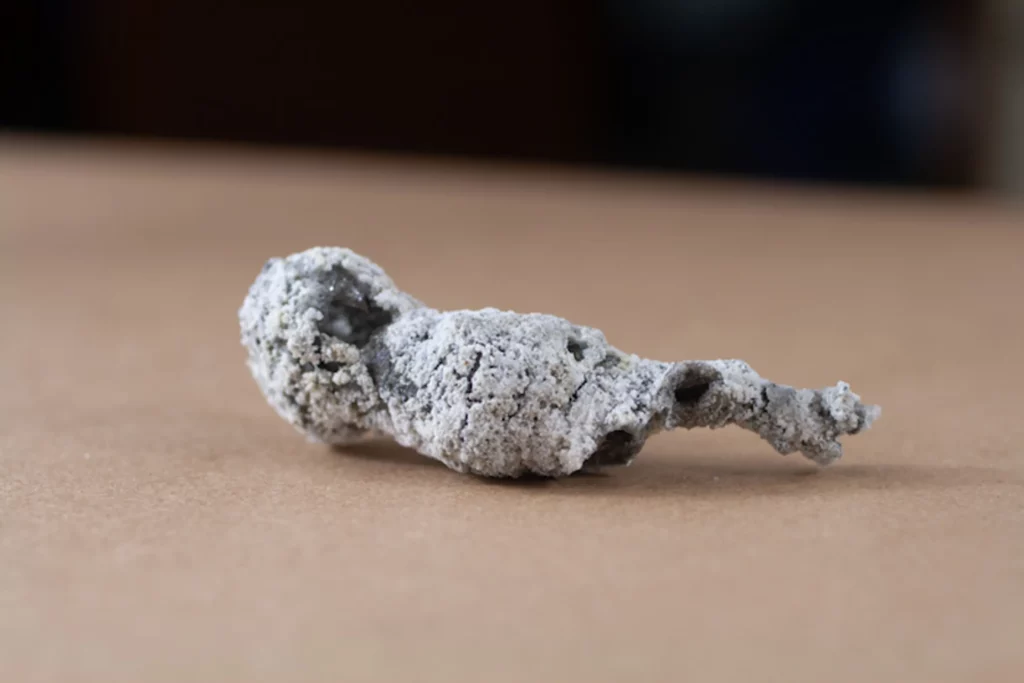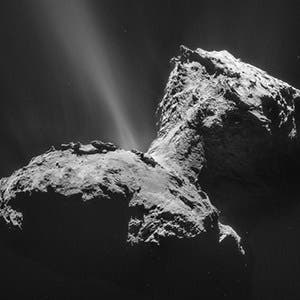For a geologist, discovering a new rock is always a thrilling experience. But the excitement reaches unprecedented heights when the only comparable specimens are extraterrestrial rocks. A professor from the University of South Florida found a new phosphorus material in a rock that has never been seen before happening naturally on Earth.

Geoscientist Matthew Pasek discovered that lightning that struck a tree in the New Port Richey area in Florida created a new phosphorus material that could represent a new mineral group. “Minerals similar to it can be found in meteorites and space, but we’ve never seen this exact material anywhere,” Pasek said in a media statement.
In a recent study, Pasek looked at how high-energy events such as a lighting can cause unique chemical reactions, and in this case, result in a new material. “When lightning strikes a tree, the ground typically explodes out and the surrounding grass dies, forming a scar and sending electric discharge through nearby rock,” he explained.
This creates fulgurites, also known as fossilized lightning – natural tubes or crusts of glass formed by the fusion of silica (quartz) sand or rock. Homeowners in New Port Richey found a fulgurite and decided to sell it, assuming it had value. Pasek bought it, and later on began working with Luca Brindi, a mineralogy expert in Florence, Italy.
Looking into the rock
Together with Brindi, Pasek started looking into unusual minerals that bear the element phosphorus, especially those formed by lightning, to better understand high-energy phenomena. “It’s important to understand how much energy lightning has because then we know how much damage a lightning strike can cause,” Pasek said.
Florida is usually described as the “lighting capital of the US,” with around 83 lightning events per square kilometer every year. The state’s topography, a peninsula surrounded by water, makes it an ideal environment for thunderstorms, especially in summer. Sea breeze-driven activity can also trigger thunderstorms in the wet season.
When that happens, Pasek said iron accumulates and covers tree roots. In the recent case of New Port Richey, the lighting strike combusted not only the iron on the tree roots but also the naturally occurring carbon in the tree. These two elements led to a chemical reaction that created the fulgurite figure later found by the homeowners.
Inside the fulgurite, the researchers found a colorful and crystal-like matter that had never been seen before. They tried to remake the material in the lab but the experiment didn’t work. This means that the material forms under exact conditions and that if heated too long it will turn into the mineral found in meteorites, they said.
“Previous researchers indicate that lightning reduction of phosphate to have been a widespread phenomenon on the early Earth,” Tian Feng, the study’s co-principal investigator, said in a media statement. “However, there is an environmental phosphite reservoir issue in Earth that these solid phosphite materials are hard to restore.”
The researchers believe their findings can reveal other forms of reduced minerals, which could have been important in the development of life on Earth. They don’t think the material they found could be mined for uses similar to other phosphates, such as fertilizer. Up next, they will try to establish if it can be officially declared a mineral.
The study was published in the journal Communications Earth & Environment.





